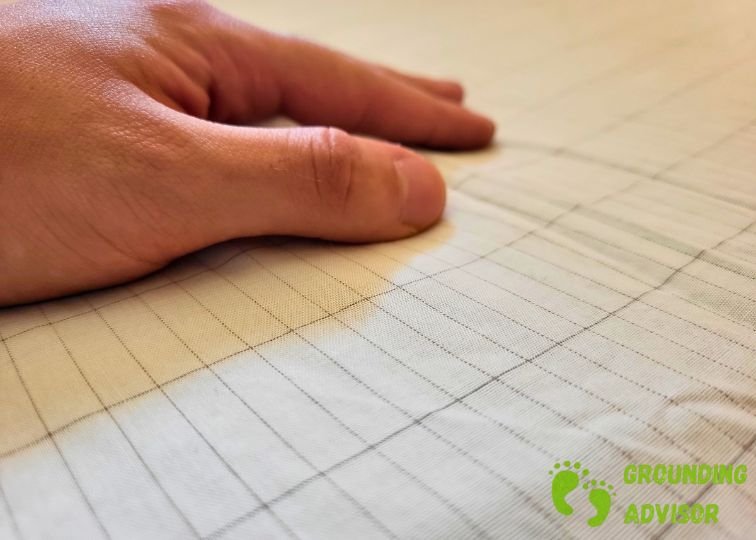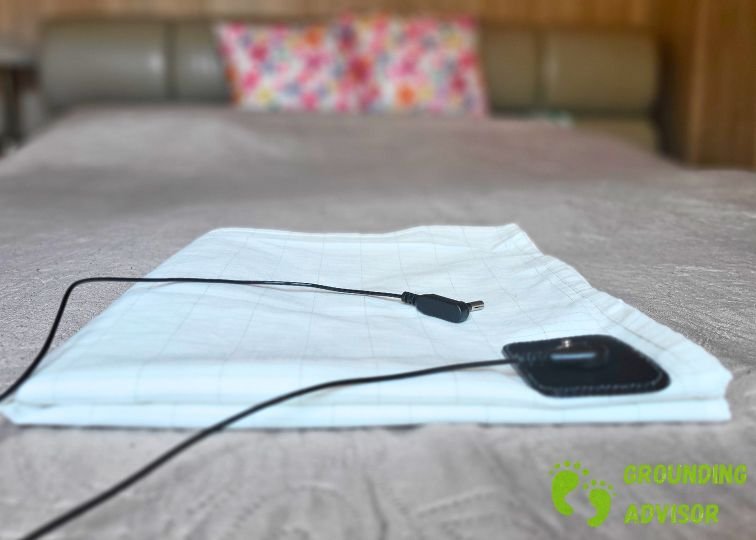So, grounding sheets or mats? I might surprise you, but for me, there’s really no winner or loser here. If you’ve read some other articles on my blog, you probably noticed that I actually use both, depending on the time of day. The way I think here is simple: sheets for nighttime and mats for daytime.
The truth is, you cannot really “overdose” on grounding. It’s not like taking too much of a supplement. But what you can do is maximize the benefits by staying grounded for as long as possible. That’s what I’ve been doing for the last few years, and I feel like it has really paid off. So, in my opinion, using both sheets and mats is the best possible choice.
But there are subtle differences between these two amazing products, and if you are curious what they are, let’s explore them. For this comparison, I’ll be using the grounding sheet and mat from Earthing Harmony as my reference points.
Some of the links on this page are affiliate links. This means that if you click on one of the links and make a purchase, I may earn a small commission at no additional cost to you.
Earthing Harmony Grounding Sheet | Earthing Harmony Grounding Mat |
|---|---|
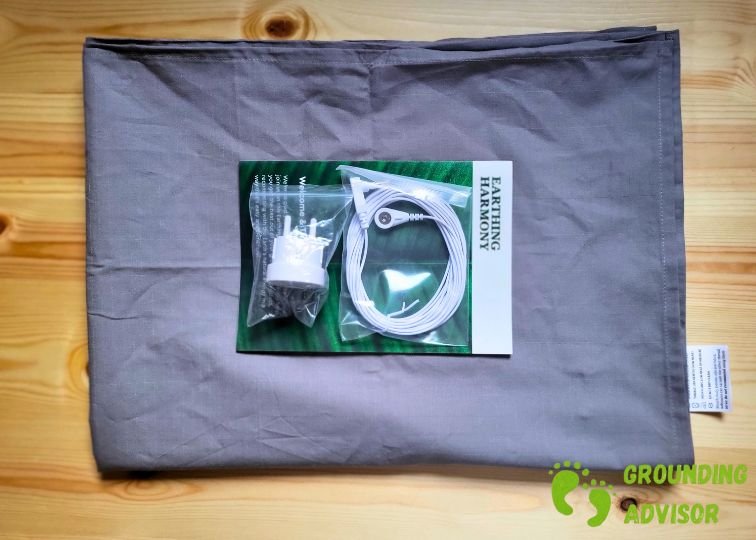 | 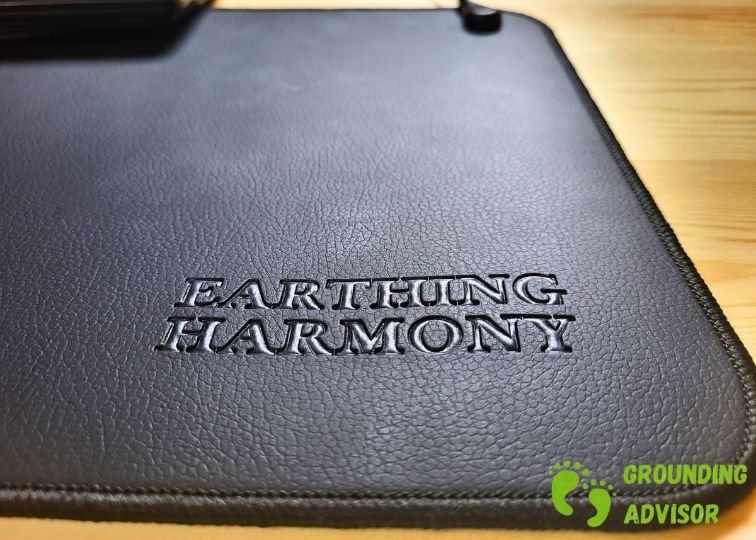 |
Best for: Anyone focused on maximizing the restorative benefits of grounding during sleep. Their large size ensures you maintain consistent bare skin contact all night, even if you toss and turn, making them the ideal choice for overnight use. | Best for: Those who want a versatile and portable grounding solution for their waking hours. They are perfect for use at a desk, while reading, or watching TV, providing a convenient way to stay grounded during daytime activities. |
Use Case
When it comes to pure versatility, mats are the clear winner. There’s really no contest. I take my mat almost everywhere, but its main home-away-from-home is my office. You can roll the mat up so nicely. Mine came with a neat little carrying case that I use daily. I just tuck it under my arm and go.
Think about it: you can place it under your desk for your feet, or on your desk for your wrists while you type. It’s a portable little patch of earth.
While sheets are equally portable (they fold up, after all), you can’t exactly spread a grounding sheet across your chair at work or in a coffee shop. It’s just not practical. For that on-the-go, daytime connection, the mat is better.

Size
Let’s talk about size, because this is where the tables turn. Remember, bare skin contact is crucial for grounding. It’s the entire principle in action – your skin acting as a conductor. So, the more surface area you have, the better your connection.
Here, sheets leave mats in the dust. You can find sheets in a California king size of 72 x 84 inches, covering a huge portion of your bed. My Earthing Harmony mat, by contrast, is 27 x 10 inches. It’s perfect for my feet, but that’s about it. Some brands do sell larger mats; for example, The Grounding Co. has one that’s 24 x 36 inches. But it’s still significantly smaller than even a twin-sized sheet.
This is exactly why I don’t recommend using mats for sleeping. You can certainly try it, but it happened to me more times than I can count that I’d wake up in the middle of the night having completely rolled off the mat. I’d moved in my sleep, lost that precious skin contact, and defeated the whole purpose of overnight grounding. With a sheet, you can toss and turn all you want; you’re almost always going to be in contact.
Material & Comfort
You might think that one feels better than the other, but mats and sheets are made from different materials and are, in my experience, equally comfortable for their intended jobs.
Your grounding sheets, like my Earthing Harmony one, are typically a soft cotton fabric interwoven with microscopic silver threads. It’s this silver that provides the conductivity. It feels just like a regular, high-quality bed sheet.
Mats are a different story. Instead of silver, they usually have conductive carbon fiber infused into the material. They are much thicker than sheets and sometimes have two or three layers – a soft polyurethane cushion on top and maybe a high-density polymer foam base. It gives them a sturdy, slightly padded feel that’s quite pleasant under your feet.
Another small but practical point: mats don’t tend to crease or wrinkle the way sheets do. And we all know you can’t just take a hot iron to a grounding sheet. It’s a relief that Earthing Harmony actually allows for ironing on a low heat from time to time, which is a nice bonus, but it’s not something you want to do often.

Cleaning
This is a big one, and it’s where the two products diverge quite a bit. Honestly, sheets are more demanding.
To maintain the conductivity of your silver-threaded Earthing Harmony sheets, you have to wash them regularly. This isn’t just for hygiene; it’s to remove the body sweat and natural skin oils that can build up and insulate the silver threads, making them less effective.
Here are the guidelines I follow religiously:
- DO wash your sheets weekly, or at least twice a month.
- DO use a washing machine with warm water (around 105°F or 40°C).
- DO line dry or use a dryer on low heat.
- DO wait an hour after applying lotions or body oils before touching the sheets.
- DON’T wash with bleach or fabric softeners. They ruin conductivity.
- DON’T use whitening detergents or oxi-detergents.
- DON’T use detergents with oils like lavender or coconut.
- DON’T use dryer sheets.
Mats, on the other hand, are a breeze. I clean my mat every couple of weeks with a simple mixture of warm water and a drop of natural, additives-free liquid dish soap. You just wipe it down, rinse it with a damp cloth, and let it air dry. No machines, no special cycles.
Price Range
As you might guess from the size difference, sheets are usually a few dozen dollars more expensive than mats. The cost really comes down to the amount of conductive material used. I paid about $60 for my Earthing Harmony mat and $90 for my sheet. If you have a California king bed, you could be looking at a cost closer to $180 for a high-quality sheet. It’s an investment, but one that pays dividends in sleep quality.
Final Thoughts
As I wrote in the beginning, I don’t think there’s a single “better” option. My honest recommendation is to stay grounded for as long as possible by investing in both a sheet and a mat. It’s about creating a lifestyle where you are almost always connected.
But if you need to choose just one to start, the decision is pretty straightforward. Just ask yourself: When do I need grounding most?
If your main goal is to improve your sleep and tap into those deep, restorative benefits overnight, the sheet is the obvious winner. Despite the more involved cleaning, its size ensures you stay connected all night long.
If you want something smaller and more compact to use while working at your desk, watching TV, or reading a book, then a mat is a fantastic choice. It’s your portable, versatile grounding tool for the waking hours.
Ultimately, it’s about what fits your life. Either way, you’re taking a wonderful step toward reconnecting with the Earth’s natural energy!
Earthing Harmony Grounding Sheet | Earthing Harmony Grounding Mat |
|---|---|
 |  |

Jeremiah Kowalski
I’m Jeremiah, and grounding changed my life in the best way. When I first discovered it, I had no idea how powerful simply reconnecting with the earth could be. But I also noticed that so many people were just like me at the beginning, unsure what grounding even is or how to start. That’s why I created this blog: to make grounding more approachable and practical. Product testing is a passion of mine, especially in the wellness space. I also run waterbottleadvisor.com, where I review drinkware products that support hydration and overall well-being.

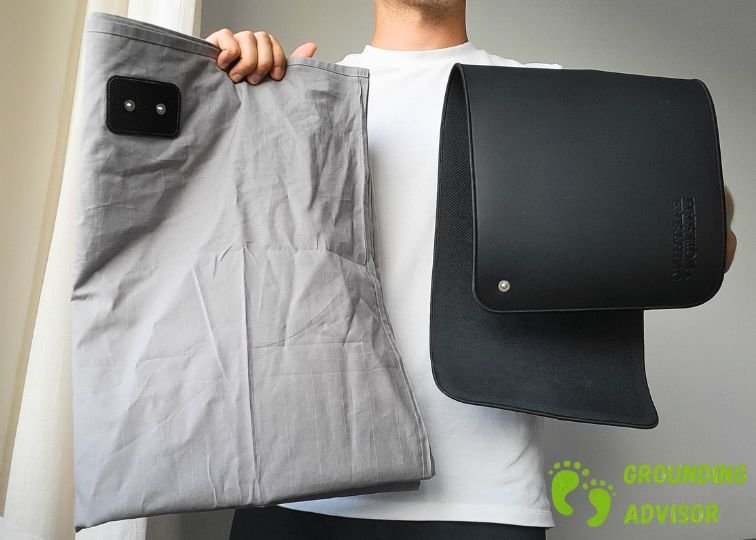
![3 Best Grounding Sheets of 2025 [Personally Tested]](https://groundingadvisor.com/wp-content/uploads/2025/07/Projekt-bez-nazwy-38.jpg)
![3 Best Grounding Mats of 2025 [Personally Tested]](https://groundingadvisor.com/wp-content/uploads/2025/07/Projekt-bez-nazwy-52.jpg)
